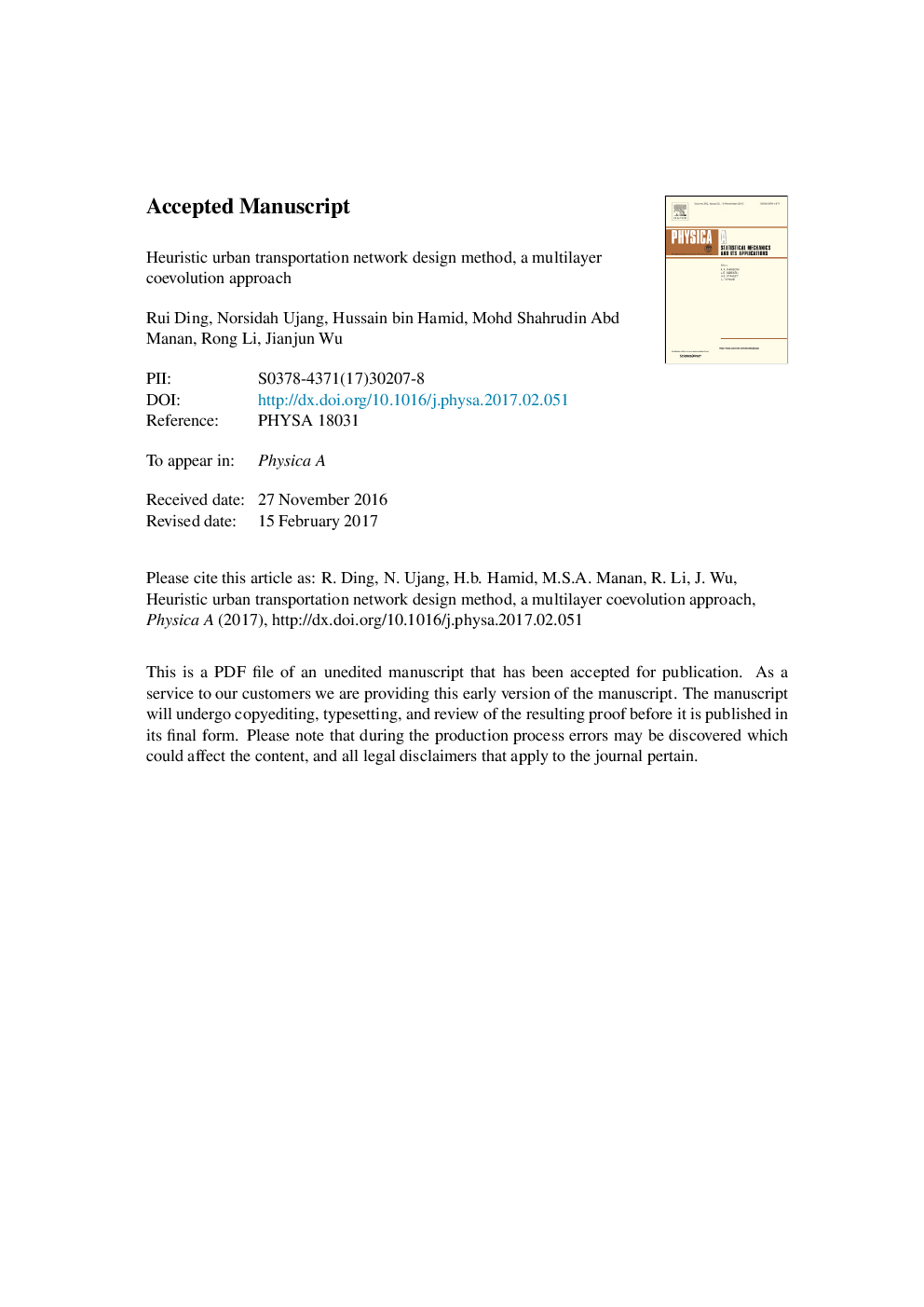| Article ID | Journal | Published Year | Pages | File Type |
|---|---|---|---|---|
| 5103014 | Physica A: Statistical Mechanics and its Applications | 2017 | 31 Pages |
Abstract
The design of urban transportation networks plays a key role in the urban planning process, and the coevolution of urban networks has recently garnered significant attention in literature. However, most of these recent articles are based on networks that are essentially planar. In this research, we propose a heuristic multilayer urban network coevolution model with lower layer network and upper layer network that are associated with growth and stimulate one another. We first use the relative neighbourhood graph and the Gabriel graph to simulate the structure of rail and road networks, respectively. With simulation we find that when a specific number of nodes are added, the total travel cost ratio between an expanded network and the initial lower layer network has the lowest value. The cooperation strength Î and the changeable parameter average operation speed ratio Î show that transit users' route choices change dramatically through the coevolution process and that their decisions, in turn, affect the multilayer network structure. We also note that the simulated relation between the Gini coefficient of the betweenness centrality, Î and Î have an optimal point for network design. This research could inspire the analysis of urban network topology features and the assessment of urban growth trends.
Related Topics
Physical Sciences and Engineering
Mathematics
Mathematical Physics
Authors
Rui Ding, Norsidah Ujang, Hussain bin Hamid, Mohd Shahrudin Abd Manan, Rong Li, Jianjun Wu,
